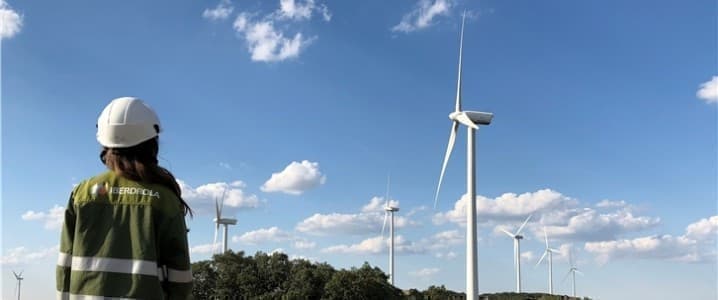
Boosting U.S. Renewables: Impact of Inflation Reduction Act
The Inflation Reduction Act (IRA), a driving force behind clean energy equipment manufacturing and major land development pursuits in the United States, is projected to triple annual renewable capacity additions to 110 gigawatts (GW) in the next decade, says global energy consultancy Wood Mackenzie.
Despite facing supply-chain issues and tariff challenges unrelated to the IRA, and some lingering uncertainties about certain IRA provisions, the benefits of this significant climate law have started to emerge, according to various clean energy associations.
“Despite remaining challenges, low-cost renewables represent a significant investment opportunity. We predict that annual capacity additions in 10 years will nearly triple today’s figures,” said Chris Seiple, Vice Chairman of Wood Mackenzie’s Power & Renewables group, during the recent RE+ conference in Las Vegas, as reported by Electrek.
Enacted in August last year, the IRA includes nearly $370 billion in climate and clean energy provisions. These include solar, wind, storage, critical minerals, energy research funding, and credits for clean energy technology manufacturing like wind turbines and solar panels.
Analysts and industry associations predict a surge in wind, solar, energy storage, and related manufacturing in the coming years.
Despite the IRA’s passage, 2022 saw a decline in U.S. renewable capacity additions due to trade restrictions, supply chain uncertainties, and regulatory challenges. Related: Biden Administration’s Offshore Wind Plan Plagued By Soaring Costs.
Last year, the U.S. installed more than 25 GW of wind, solar, and storage, but total clean power installations dropped for the first time in five years, according to a report by the American Clean Power Association (ACP).
Analysts anticipate that the U.S. clean energy market will soon overcome the uncertainties experienced in 2022.
The International Energy Agency (IEA) said in its Renewable Energy Market Update report that wind and solar PV markets contracted last year due to restrictive trade measures and supply chain constraints. However, annual additions for both technologies are expected to increase by around 40% in 2023, setting a new record for solar PV.
“Existing tax incentives underpin the current forecast, while the IRA’s full effect will become evident after 2024, offering unprecedented certainty for renewable energy projects until 2032,” stated the agency.
The U.S. solar industry anticipates a record-high installation of 32 GW of new capacity this year, representing a 52% surge from 2022, as reported by the Solar Energy Industries Association (SEIA) and Wood Mackenzie.
Total operating solar capacity in the U.S. is forecasted to rise from 153 GW today to 375 GW by 2028, according to Wood Mackenzie.
“Despite the challenges of navigating IRA guidance, the growth outlook for the U.S. solar industry is strong,” said Michelle Davis, Head of Global Solar at WoodMac, signifying that the industry is yet to fully benefit from the IRA.
Besides installations, solar manufacturing is also set to skyrocket. Since the IRA’s enactment, the U.S. has witnessed over 59 solar manufacturing announcements.
“If all of these facilities become operational by 2026, they would have the potential to meet 250% of our nation’s current demand for solar,” SEIA president and CEO Abigail Ross Hopper said at the RE+ conference.
In addition to benefiting the economy with an estimated $565 billion over the next decade, the IRA is projected to create half a million jobs in the U.S. solar and storage industry, added Hopper.
From August 2022 to July 2023, over $270 billion was announced for capital investment in utility-scale clean energy projects and manufacturing facilities in the United States, according to an ACP report. This surpasses the combined clean energy investments made over the previous eight years.
Within the last year, $271 billion in investment and nearly 185 GW worth of projects were announced, along with 83 new or expanded utility-scale clean energy manufacturing facilities.
“America’s manufacturing centers are competing to meet new clean energy demand with a new domestic wind, solar or storage manufacturing facility announced every four days,” stated ACP CEO Jason Grumet.
Read More US Economic News
